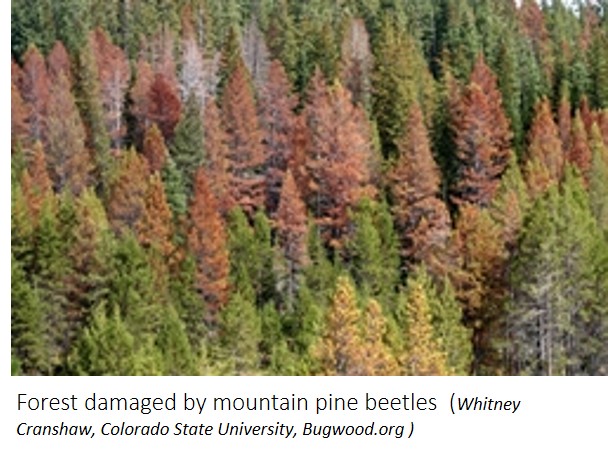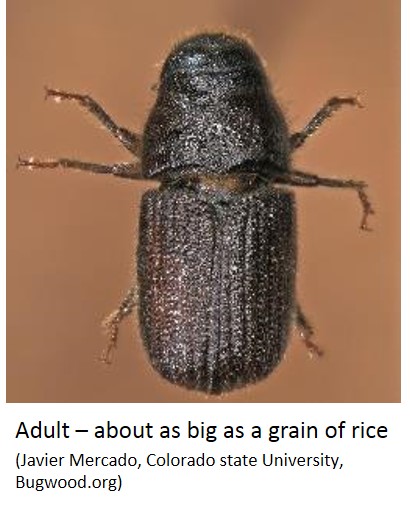 Mountain pine beetle
Dendroctonus ponderosae Hopkins has been described as the most destructive pest of mature pine trees in North America. It has not been found in Wisconsin. The Department of Agriculture, Trade and Consumer Protection has imposed an "exterior quarantine" that restricts imports of products from MPB-infested areas that could carry the beetle into Wisconsin.
Mountain pine beetle
Dendroctonus ponderosae Hopkins has been described as the most destructive pest of mature pine trees in North America. It has not been found in Wisconsin. The Department of Agriculture, Trade and Consumer Protection has imposed an "exterior quarantine" that restricts imports of products from MPB-infested areas that could carry the beetle into Wisconsin.
Until recent times,MPB's range was limited to western pine forests from Mexico to British Columbia. The most recent, unprecedented outbreak of mountain pine beetle spans more than 88 million acres of pine forests in Colorado, Wyoming, Idaho, Montana, and South Dakota, as well as the Canadian provinces of British Columbia and Alberta.
Research shows that red, jack and eastern white pine trees would be susceptible to attack by MPB. These are Wisconsin's most economically important pine species, accounting for nearly a quarter of the state's total annual commercial timber harvest. Pines make up more than 10% of our forests, and more than 20% of our timberland managed for harvest. Pine products contribute more than $70 million annually to our economy.

.png)
MPB spend most of their lives under the bark of pine trees, where the females lay their eggs. The eggs hatch into caterpillar-like larvae, form cocoon-like pupae, and emerge as adults. The insects carry a fungus that renders the tree unable to defend itself against the attack. Together the fungus and the sheer numbers of larvae feeding kill the tree.
The most likely way that MPB would enter Wisconsin would be on untreated or raw pine wood with the bark still on, including logs, burls, stumps, firewood, green lumber, wood chips and wood packing materials. This is the reason for the exterior quarantine.
Quarantine requirements
Back to main pest and disease page